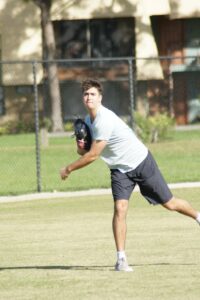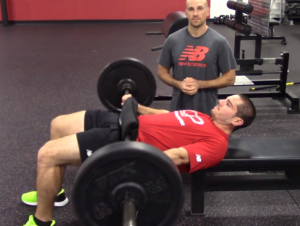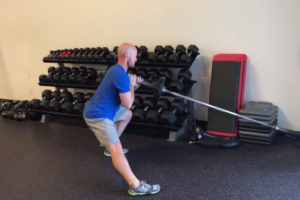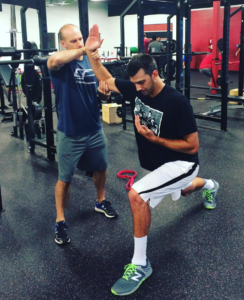
The Study EVERY Trainer and Coach Should Read and Understand
There are very few absolutes in the world of health and human performance. The answer to just about every question that’s asked is “maybe.” Even in the debate between anecdotal observations and exclusively evidence-based practice, there are gray areas that can sometimes be heavily debated.
There is one study, however, that I think every trainer, coach, rehabilitation specialist, and fitness enthusiast should read and understand. My long-time friend Dr. Stu McGill – arguably the world’s premier spine authority – is one of the lead authors as well:
Frost DM, Beach TA, Callaghan JP, McGill SM. Exercise-Based Performance Enhancement and Injury Prevention for Firefighters: Contrasting the Fitness- and Movement-Related Adaptations to Two Training Methodologies. J Strength Cond Res. 2015 Sep;29(9):2441-59.
I know what you’re thinking: “What can I learn from how firefighters train? My sport, life, and occupational demands are entirely different.”
To understand why this study matters so much to you and how you train, we need to look at the methods of it.
Basically, the researchers took 52 firefighters and plugged them into one of three groups:
1. a movement-guided fitness (MOV) group that received both programming and coaching on how to move correctly
2. a conventional fitness (FIT) group that only received programming, but not coaching
3. a control (CON) group that didn’t do any exercise intervention
Before and after the 12-week training (or no training, in the control group) intervention, all the firefighters went through a series of fitness test and laboratory screens. They looked at things like body composition, aerobic capacity, grip strength, muscular endurance (max push-ups, planks for time), lower body power (vertical jump), and flexibility (sit-and-reach test).
Of particular importance was the fact that the pre- and post-tests included “five whole-body tasks” that were NOT included in any part of the training intervention. These challenges were a box deadlift, squat (body weight), lunge, split-stance 1-arm cable press, and split-stance 1-arm cable row. The goal was to evaluate how well the training actually transferred to creating more efficient, high-quality movements in whatever chaos life (or, more specifically, firefighting) threw at them. On these tasks, researchers looked at spine and knee motion with reflective markers to scrutinize movement quality under various conditions of low and speed of movement. The researchers noted (bolded section is from me for emphasis):
FIT and MOV groups exhibited significant improvements in all aspects of fitness; however, only MOV exhibited improvements in spine and frontal plane knee motion control when performing each transfer task. FIT exhibited less controlled spine and frontal plane knee motions while squatting, lunging, pushing, and pulling. More MOV participants (43%) exhibited only positive posttraining changes (i.e., improved control), in comparison with FIT (30%) and CON (23%). Fewer negative posttraining changes were also noted (19, 25, and 36% for MOV, FIT, and CON).
So what the heck does this mean for you? Quality training matters.
Those in the high-quality coaching group moved significantly better on average and had substantially fewer negative outcomes. In the training without coaching group, the average “upside” was lower – and there were more incidences of negative adaptation.
This is a study that proves that coaching a quality single-leg RDL will carry over to our pitchers controlling themselves safely into landing.
It shows that the “true” hip extension we train in the gym will also be there when our athletes run and jump.
It shows that the lateral lunge we coach helps our athletes to change direction safely on the lacrosse field.
It demonstrates that deadlift hip hinge technique we coach so hard in the gym reduces my likelihood of hurting my back when I pick up a squirming toddler.
It means that the 90/90 rotator cuff strength and timing position we meticulous coach and train protects our guys when they lay the arm back during the external rotation phase of throwing.
It also shows that quality strength and conditioning outcomes are about so much more than just a program or even a good training environment; they’re about hammering home loads of consistently high quality reps to markedly increase the likelihood of favorable movement quality adaptations – while protecting against the downside.
This study also demonstrates why ready-to-print rotator cuff programs often fail shoulder pain patients. That one-size-fits-all approach – combined with inattentive coaching – often keeps patients on a painful path, when a little bit of technique and programming adjustments could be a game changer. And, it shows why some otherwise healthy people can wind up injured when they do the exact same program as the friend who had no problems at all with it. We see it all the time in individuals who come our way for one-time consultations; just a little coaching or program tinkering makes a huge difference in keeping them asymptomatic and enjoying their training.
The pride you take in your coaching – and the pride individuals take in their training technique – matters. Don’t ever forget it!








